Endoplasmic Reticulum-Targeted Phototherapy Remodels the Tumor Immunopeptidome to Enhance Immunogenic Cell Death and Adaptive Anti-Tumor Immunity
- PMID: 40283929
- PMCID: PMC12030737
- DOI: 10.3390/ph18040491
Endoplasmic Reticulum-Targeted Phototherapy Remodels the Tumor Immunopeptidome to Enhance Immunogenic Cell Death and Adaptive Anti-Tumor Immunity
Abstract
Background: Endoplasmic reticulum (ER)-targeted phototherapy has emerged as a promising approach to amplify ER stress, induce immunogenic cell death (ICD), and enhance anti-tumor immunity. However, its impact on the antigenicity of dying tumor cells remains poorly understood. Methods: Laser activation of the ER-targeted photosensitizer ER-Cy-poNO2 was performed to investigate its effects on tumor cell antigenicity. Transcriptomic analysis was carried out to assess gene expression changes. Immunopeptidomics profiling was used to identify high-affinity major histocompatibility complex class I (MHC-I) ligands. In vitro functional studies were conducted to evaluate dendritic cell maturation and T lymphocyte activation, while in vivo experiments were performed by combining the identified peptide with poly IC to evaluate anti-tumor immunity. Results: Laser activation of ER-Cy-poNO2 significantly remodeled the antigenic landscape of 4T-1 tumor cells, enhancing their immunogenicity. Transcriptomic analysis revealed upregulation of antigen processing and presentation pathways. Immunopeptidomics profiling identified multiple high-affinity MHC-I ligands, with IF4G3986-994 (QGPKTIEQI) showing exceptional immunogenicity. In vitro, IF4G3986-994 promoted dendritic cell maturation and enhanced T lymphocytes activation. In vivo, the combination of IF4G3986-994 with poly IC elicited robust anti-tumor immunity, characterized by increased CD8+ T lymphocytes infiltration, reduced regulatory T cells (Tregs) in the tumor microenvironment, elevated systemic Interferon-gamma (IFN-γ) levels, and significant tumor growth inhibition without systemic toxicity. Conclusions: These findings establish a mechanistic link between ER stress-driven ICD, immunopeptidome remodeling, and adaptive immune activation, highlighting the potential of ER-targeted phototherapy as a platform for identifying immunogenic peptides and advancing peptide-based cancer vaccines.
Keywords: ER-targeted phototherapy; adaptive anti-tumor immunity; endoplasmic reticulum stress; immunogenic cell death; immunogenic peptides; tumor immunopeptidome remodeling.
Conflict of interest statement
The authors declare no conflicts of interest.
Figures

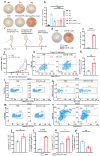
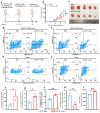
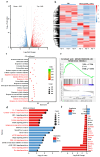
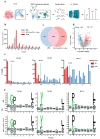
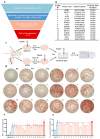
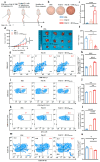
Similar articles
-
Rationally Designed Heptamethine Cyanine Photosensitizers that Amplify Tumor-Specific Endoplasmic Reticulum Stress and Boost Antitumor Immunity.Small. 2022 Aug;18(34):e2202728. doi: 10.1002/smll.202202728. Epub 2022 Jul 7. Small. 2022. PMID: 35796192
-
Endoplasmic Reticulum Stress Nano-Orchestrators for Precisely Regulated Immunogenic Cell Death as Potent Cancer Vaccines.Adv Healthc Mater. 2025 Jan;14(1):e2401851. doi: 10.1002/adhm.202401851. Epub 2024 Oct 24. Adv Healthc Mater. 2025. PMID: 39449212
-
Endoplasmic Reticulum-Targeting AIE Photosensitizers to Boost Immunogenic Cell Death for Immunotherapy of Bladder Carcinoma.ACS Appl Mater Interfaces. 2024 Jan 10;16(1):245-260. doi: 10.1021/acsami.3c14068. Epub 2023 Dec 19. ACS Appl Mater Interfaces. 2024. PMID: 38113527
-
Immunogenic cell death inducer peptides: A new approach for cancer therapy, current status and future perspectives.Biomed Pharmacother. 2023 May;161:114503. doi: 10.1016/j.biopha.2023.114503. Epub 2023 Mar 13. Biomed Pharmacother. 2023. PMID: 36921539 Review.
-
A stressful microenvironment: opposing effects of the endoplasmic reticulum stress response in the suppression and enhancement of adaptive tumor immunity.Int Rev Immunol. 2015 Mar;34(2):104-22. doi: 10.3109/08830185.2015.1018415. Epub 2015 Mar 16. Int Rev Immunol. 2015. PMID: 25774773 Review.
References
-
- Yuan X., Zhou J.-L., Yuan L., Fan J., Yoon J., Zhang X.-B., Peng X., Tan W. Phototherapy: Progress, challenges, and opportunities. Sci. China Chem. 2024;68:865. doi: 10.1007/s11426-024-2411-7. - DOI
-
- Sun Z., Zhao M., Wang W., Hong L., Wu Z., Luo G., Lu S., Tang Y., Li J., Wang J., et al. 5-ALA mediated photodynamic therapy with combined treatment improves anti-tumor efficacy of immunotherapy through boosting immunogenic cell death. Cancer Lett. 2023;554:216032. doi: 10.1016/j.canlet.2022.216032. - DOI - PubMed
Grants and funding
- CSTB2022NSCQ-MSX1072/Chongqing Natural Science Foundation
- CSTB2022TFII-0IX0077/Chongqing Technology Foresight and System Innovation Project
- YKCSZ23057/Chongqing Graduate Education Curriculum Ideological and Political Demonstration Project
- ZXYZZKY02/Talent Innovation Ability Training Program of Army Medical Center
- GZC20233600/Postdoctoral Research Foundation of China
LinkOut - more resources
Full Text Sources
Research Materials

